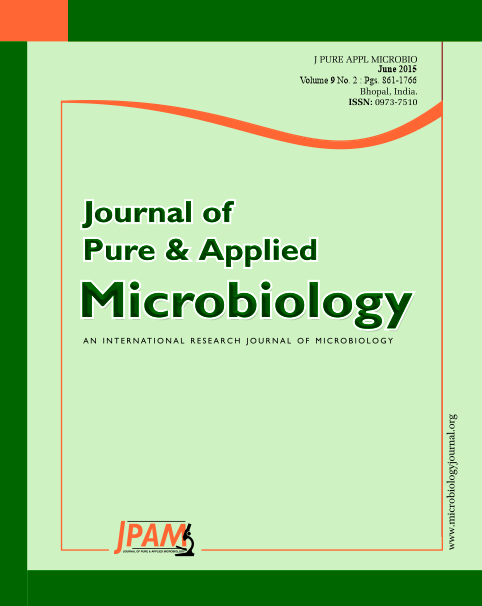The bacterial blight pathogen of pomegranate Xanthomonas axonopodis pv. punicae was isolated from the infected plant material collected from the field. The pathogen was confirmed by proving Koch’s postulates and PCR detection method. Growth characteristics of the pathogen were studied by using differential and semi-selective culture media viz., XAN-D Agar, MSSXAN Agar, Yeast extract Sucrose Peptone Agar (YSPA), Nutrient Broth Yeast extract Agar (NBYA), Nutrient Glucose Agar (NGA), XTS Agar, NSCAA medium, Luria Bertani Agar (LBA) and Yeast Nutrient Agar (YNA). A considerable range of variations were observed with respect to colony colour, appearance and Fuscan pigment production on different media tried. Negative reaction for gram staining and positive for KOH solubility test indicated the gram negative nature of the bacteria. The bacteria was positive for catalase test, gelatin liquefaction, starch hydrolysis, asculin hydrolysis, acid production from glucose, H2S production from cysteine hydrochloride, and negative for gas production from glucose, urease production, citrate production and indole production. The PCR amplification of gyrB gene resulted in production of an amplicon size of approximately 500 bp which confirmed the pathogen as Xanthomonas axonopodis pv. punicae.
Pomegranate, Bacterial blight, Xanthomonas axonopodis pv. punicae, Cultural characterization, bio-chemical profiling, PCR based assay
© The Author(s) 2015. Open Access. This article is distributed under the terms of the Creative Commons Attribution 4.0 International License which permits unrestricted use, sharing, distribution, and reproduction in any medium, provided you give appropriate credit to the original author(s) and the source, provide a link to the Creative Commons license, and indicate if changes were made.


